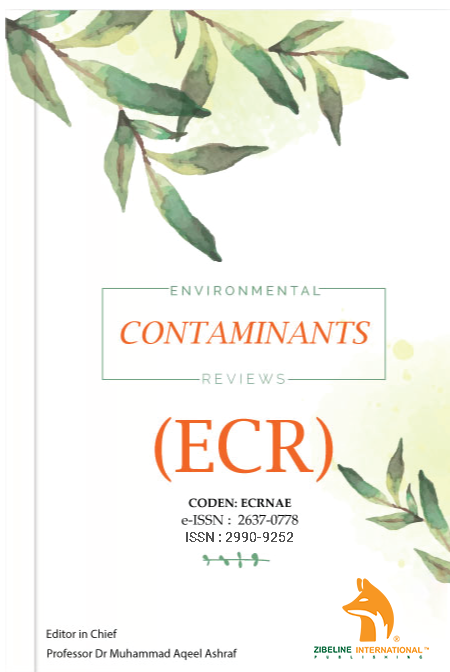
HUMAN-INDUCED HEAVY METAL CONTAMINATION IN GROUNDWATER AND SURFACE WATER: A CASE STUDY OF UGBOMORO AND UGBOLOKPOSO, SOUTHERN, NIGERIA
Journal: Environmental Contaminants Reviews (ECR)
Author: Ogueh D.E*. and Aladin A.E.
This is an open access article distributed under the Creative Commons Attribution License CC BY 4.0, which permits unrestricted use, distribution, and reproduction in any medium, provided the original work is properly cited
Doi:10.26480/ecr.02.2025.78.89
ABSTRACT
Water pollution from unregulated human activities remains insufficiently documented in many developing countries, including Nigeria. This study investigates the effects of poor agricultural practices, abattoir waste discharge, indiscriminate waste dumping, and dredging on the water quality of Ugbomoro and Ugbolokposo communities in Delta State. Surface and groundwater samples were collected and analyzed using Atomic Absorption Spectroscopy (AAS) to determine their physicochemical characteristics and heavy metal concentrations. The results revealed acidic pH levels (5.1–6.55), electrical conductivity (EC) values ranging from 54 to 596 μS/cm, and salinity levels between 0.024 and 0.27 mg/L. Total Dissolved Solids (TDS) were low (0–2.1 mg/L), while Chemical Oxygen Demand (COD) ranged from 27 to 255 mg/L, indicating potential organic pollution from animal waste, sewage, or decaying materials. Most samples were clear and free from suspended particles, except sample HWD 12, which showed signs of localized contamination. The acidic pH suggests the water may be corrosive and unsuitable for drinking or irrigation. Elevated EC and salinity point to dissolved ion presence, possibly from chemical runoff or waste. Although most heavy metal concentrations complied with NSDWQ (2007) and WHO (2011) standards, levels of iron (Fe), manganese (Mn), chromium (Cr), cadmium (Cd), and lead (Pb) exceeded safe limits, indicating potential health hazards and contamination from anthropogenic sources like industrial waste and improper disposal practices. Variations in water quality across sites may be linked to underlying geology, groundwater recharge patterns, proximity to pollution sources, and human activities. The findings confirm that water resources in Ugbomoro and Ugbolokposo are significantly impacted by human-induced pollution, posing threats to public health, agriculture, and ecosystems. Continuous monitoring and improved waste management are essential to safeguard these vital water sources..
KEYWORDS
Ugbomoro and Ugbolokposo, Groundwater, Eigenvalues, Contamination

